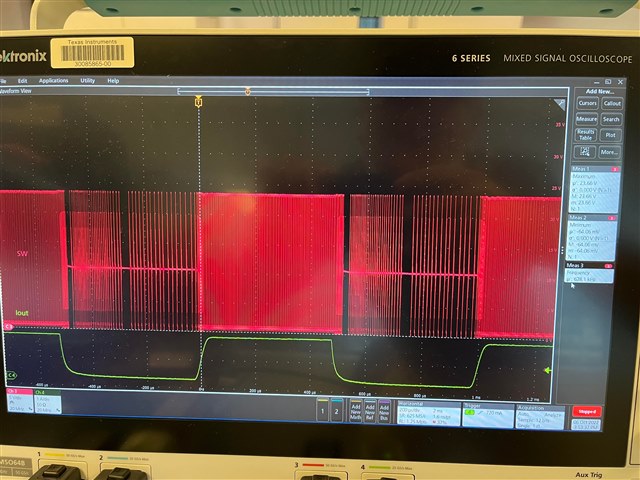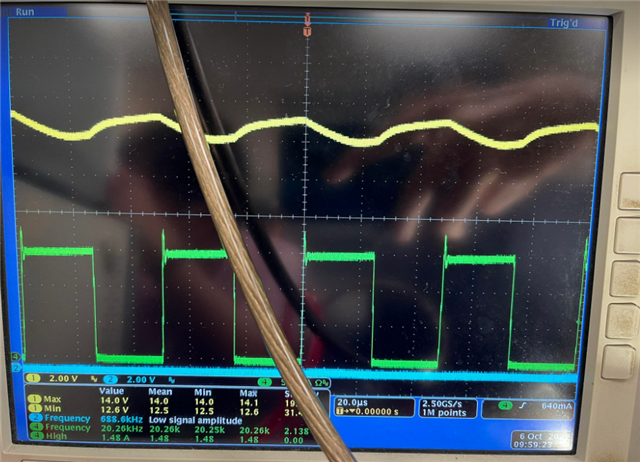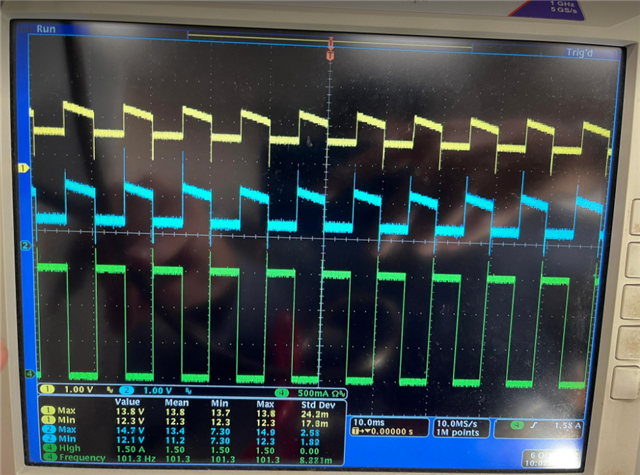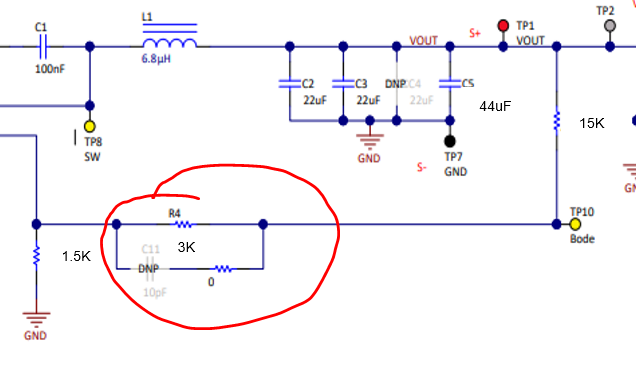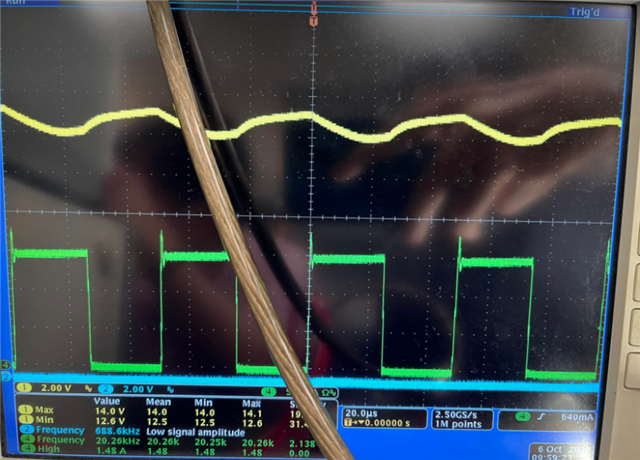Hi team,
customer load is a PWM step load which has a frequency ranging from 60Hz~20kHz,
with normal TPS62933,the audible noise is obvious.
I try to add 10ohm dummy load (10V, 1A), to boost up the switching frequency to above 100KHz at low side ( no load sinking)
but the noise is still hearable , as you can see below.
does this mean even OOA version can't solve this also?
since I notice the bottleneck is not the low switching frequency , but the frequency of Fsw variation

